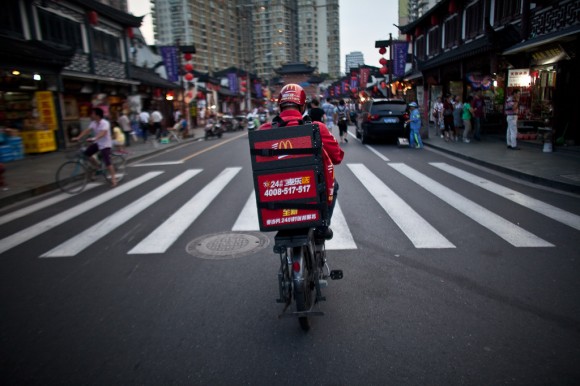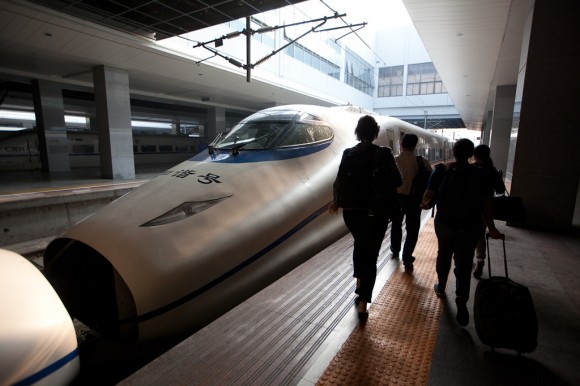This essay outlines a design & thought experiment conducted to explore China today, reflect on China’s changing global role and hold up a mirror to China’s national identity. The challenge? To make something instantly recognisable by every Chinese person, using resources from every part of China but without any of the players understanding what it is they were making.
This is a personal project.
Questions, comments to [email protected].
China is increasingly influencing how this planet will look in the coming century – economically, politically and culturally. My role heading up global insights in an innovation consultancy provides a particular perspective on what is happening in China: primary research reveals the nuances of how it’s citizens view themselves and the world around them; interactions with multi-national clients that are eyeing up what already is or will soon be the world’s largest economy; and conversations with Chinese brands looking to move up the value chain as they compete both at home and in the global marketplace, all with a timeline that is looking to both on short terms market wins, and long term strategy. Taken together it provides unique lens through which to see what has passed, and what will be.
While I am based out of Shanghai much of my time is spent travelling to a pretty diverse set of countries for field research, client meetings and general fact-finding and I’ve seen first-hand how growing Chinese commercial influence triggers a range of emotional responses to from suspicion and fear to jealousy, admiration and respect.
Despite having travelled and researched extensively across China I don’t pretend to fully understand this country, in the same way that I balk at saying I understand ‘Europe’ or the ‘Americas’. But since an initial visit in 2004 I’ve had hundreds of conversations with a wide gamut of Chinese from wealthy entrepreneurs through to migrant workers, housewives to truck drivers, taken tours of homes, shadowed interactions with the world around them, documented lives, and have arguably experienced facets of China that most people, Chinese included don’t appreciate – their strategies for getting by, for getting ahead, the brands they covet, their hopes, aspirations, fears. Most of this work is driven by Chinese and multinational commercial clients and I consider myself fortunate to have this perspective and grateful that these participants, people are willing to open up and share.
At the same time I’m dealing with my own conflicts. As is often the case when you work for and with multinationals – I’ve worked on and have shaped products that have sold in the hundreds of millions – a scale at which comes a particular sense of environmental and social responsibility. I’ve seen some of the best and worst of what globalisation can bring – from providing a stable income through to human and environmental exploitation; products that deliver on their brand promise and many that don’t; from having a sense of control over one’s destiny to becoming a very small, seemingly insignificant cog in a massive global machine. For our worldly experience, fancy job titles, airs and graces – I, you, we are also bit players in this global economy.
By now there are very few people left on the planet that aren’t in some way impacted by globalisation – as producers and consumers – those few who make a decision to opt-out must do so consciously. Yet our touch points to this interconnected system that churns out ever more, ever faster inherently limits our understanding of the whole. We can talk about globalisation, buy into it, buy from it, demonstrate against it, but for most of us its scale and complexity defies comprehension. Part of the machine is dedicated to designing, prototyping, testing and pushing to market connected products and services that know more about us, than we ever will about them.
It’s as if we were standing on the top of a hill and are now running at full pelt into the fog below – not quite knowing what lies ahead, letting gravity and momentum carry us, and doing our best to avoid the silhouettes of objects as they loom into view, chased by the fear of stopping.
We are living in an increasingly interconnected, and increasingly automated world. The consequences of our actions may be road-mapped, extrapolated, scenarioed, but ultimately, at best it is smart guesswork.
Most people understand the critical role that China plays in sustaining and furthering this globalised economy. But if you’re reading this (on a website written in English that sits outside the Great Firewall) there’s some nuances I’m guessing you haven’t truly absorbed: as the global economic centre of gravity continues to shift towards China++ many of the multinational companies that put products on your shelves will increasingly be designing for China 1st, they’ll increasingly design out of China; and will increasingly be led by and draw from a pool of highly skilled, highly experienced Chinese talent whose design sensibilities appeal to a global customer base, but which is also grounded in and for ‘China’. In some places this is here today, in other’s it’s around the corner.
In the next decade we’re going to see new hybrid products/services that have an global impact on the scale of the mobile phone and nascent social networking services, but created, designed, manufactured in China, whose primary market is Chinese, that couldn’t have been made anywhere else, and for whom the Rest of the World is a marketing afterthought. It’s cultural, political, technological and ideological values will be resolutely mid-21st century Chinese having absorbed the aspects of the globalised marketplace that are analogous with its worldview, and ignoring the rest. They’ll draw on the rich aesthetic within Chinese culture, the formal and informal ecosystem, its nuanced manufacturing, business and intellectual property environments that are a trajectory of today’s China.
And you’ll be queuing up to buy it, and buy into it.



